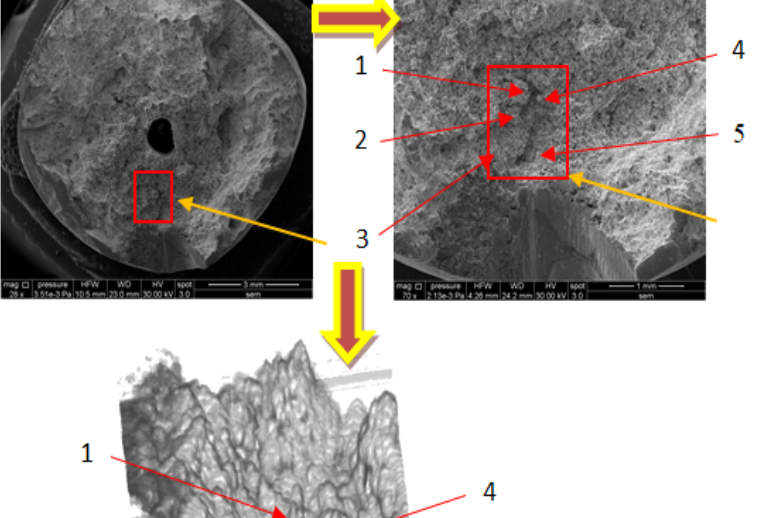
by Gheorghe Hutiu, Virgil-Florin Duma, Dorin Demian, Adrian Bradu and Adrian Podoleanu
Journal: Metals Vol. 8, Issue 2, pp. 117 (2018)
Published: February 8th, 2018
https://doi.org/10.3390/met8020117
Some forensic in situ investigations, such as those needed in transportation (for aviation, maritime, road, or rail accidents) or for parts working under harsh conditions (e.g., pipes or turbines) would benefit from a method/technique that distinguishes ductile from brittle fractures of metals—as material defects are one of the potential causes of incidents. Nowadays, the gold standard in material studies is represented by scanning electron microscopy (SEM). However, SEM instruments are large, expensive, time-consuming, and lab-based; hence, in situ measurements are impossible. To tackle these issues, we propose as an alternative, lower-cost, sufficiently high-resolution technique, Optical Coherence Tomography (OCT) to perform fracture analysis by obtaining the topography of metallic surfaces. Several metals have been considered in this study: low soft carbon steels, lamellar graphite cast iron, an antifriction alloy, high-quality rolled steel, stainless steel, and ductile cast iron. An in-house developed Swept Source (SS) OCT system, Master-Slave (MS) enhanced is used, and height profiles of the samples’ surfaces were generated. Two configurations were used: one where the dimension of the voxel was 1000 μm3 and a second one of 160 μm3—with a 10 μm and a 4 μm transversal resolution, respectively. These height profiles allowed for concluding that the carbon steel samples were subject to ductile fracture, while the cast iron and antifriction alloy samples were subjected to brittle fracture. The validation of OCT images has been made with SEM images obtained with a 4 nm resolution. Although the OCT images are of a much lower resolution than the SEM ones, we demonstrate that they are sufficiently good to obtain clear images of the grains of the metallic materials and thus to distinguish between ductile and brittle fractures—especially with the higher resolution MS/SS-OCT system. The investigation is finally extended to the most useful case of fatigue fracture of metals, and we demonstrate that OCT is able to replace SEM for such investigations as well.